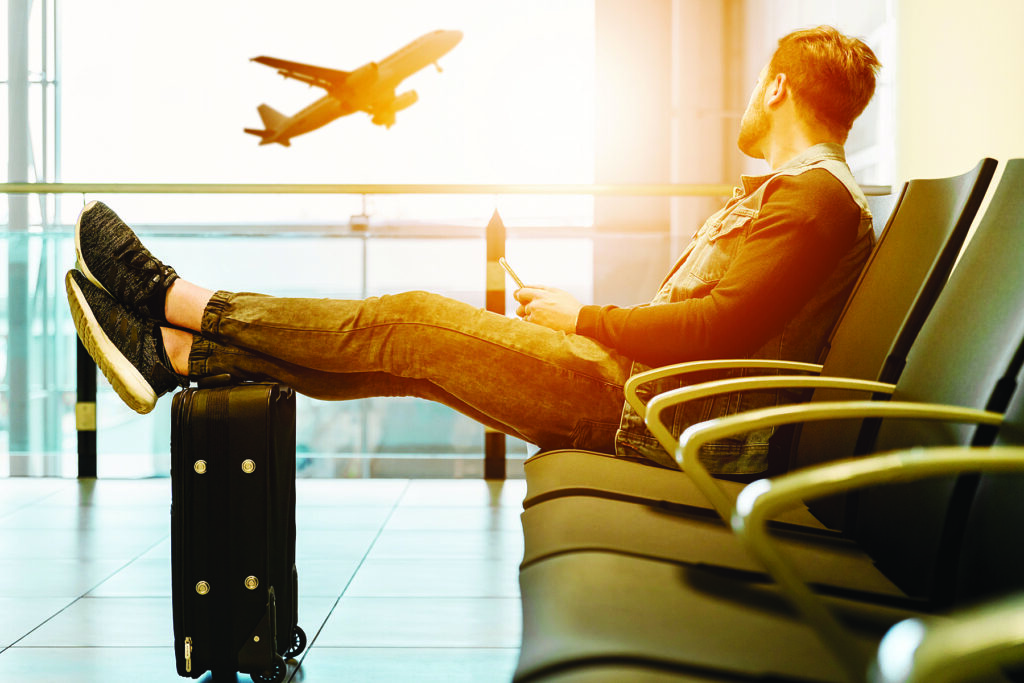Dorothy Dobbie
Travel today is a far cry from the exciting adventure it used to be. Passengers are squeezed for space, starved for food and even water (a measly half a plastic glass of lukewarm water is no treat), and often the plane is so cold you arrive shivering.
Remember back when you got a free pillow to rest your head and a blanket to cover you if you were cold? Headaches were treated with a kindly aspirin or two and you had “Three feet for your two feet” as was the slogan for CP Air before it became WestJet. A whole 36 inches! What a luxury. Today, some planes offer only nine inches from the front edge of your seat to the back of the passenger ahead of you. If you are a tall guy, your knees are constantly scrunched up against your chest. If you are a rotund person, you cannot use the table in front of you on some planes. And if folks are a little wider than what the airline considers “average” your shoulders are bound to stick out into the aisle.

And let’s talk about the aisles. They are so narrow that many people must go down them sideways. I don’t know how flight attendants cope with constantly running into oversize passenger shoulders. Some people say that seat width is only enough to fit a 12-year-old comfortably.
The latest nightmare is the Boeing 737 narrow bodied aircraft which has been getting progressively less comfortable as newer models are introduced. In the 737-700, the washrooms are too small to turn around in and certainly could not accommodate a mother and child.
The new 737 Max is a nightmare. Padding on the seats is very thin – part of the strategy to squeeze in an extra five rows of six-across seats – and they are rigid, hitting your spine just where it hurts most after a few hours. They recline only a few inches – if they recline at all. There are no TVs or other inflight entertainment. The seats are mounted on steel bars that limit the under-the-seat bag room (you can’t get even the smallest bag under the aisle seat).
Nor is first or business class any heaven. There are the same thinly padded, rigid seats that barely recline. I have never liked rigid seat sides that limit movement. They are the reason I avoid the bulkhead.
It is no picnic for the crew either. One told me that the design was lovely, but the passenger space was totally impractical – well she said “Unusable”. The galley is just as small as the washrooms, which are squeezed in beside it, instead of across the aisle from each other, as in most tourism class flights.
One good thing? There is lots of overhead space for your carry–on bags – lucky bags. They are treated better than the passengers. In the old days, airlines checked your bag – and delivered it – at no extra charge!
Fortunately, most airlines only use these planes for short and medium domestic flights – most of the time. A year ago, flying back from the Caribbean, we were stuffed in a 737-700 on WestJet for a seven-hour flight home to Toronto – and they had NO food! Said it was due to COVID-19 (bunk! The Air Canada flight from Winnipeg to Toronto had food.) However, the larger 737s are just as uncomfortable.
The Feds are in the process of tabling some new legislation purported to improve things for passengers. But early news says the changes are mainly related to flight delays, cancellations, and lost luggage. There is one provision to ensure there is water and food on a plane – perhaps to comfort those passengers who are stuck on the tarmac for hours. There is nothing related to passenger comfort, or misleading fare advertising. The new rules don’t include the many hefty “junk” fees. One pundit says that having read the draft legislation he sees holes in it big enough to drive a truck through. For example, airlines will not have to compensate passengers for weather related delays. This extends a huge loophole that we have already encountered. So far, all the delays I have experienced have been “weather related”.
And prices are going up. The security charge for air travellers, which will be in place by the time you read this, will rise for a one-way domestic flight to $9.94 from $7.48; they will increase to $34.42 from $25.91 for an international flight. It is not clear why this fee increase was felt necessary.
What plane would you choose if you could?
According to Travelogist, for medium haul flights, the Airbus A320 is arguably the most comfortable narrow body jet out there. Thanks to the wider cabin, reduced cabin-wall curvature and better-placed windows, the Airbus offers a more comfortable ride than the 737. The A350 is on a different level, the seats are firmer and have better support, better legroom and better bathroom.
For a longer intercontinental flight, the Airbus A350 wins on every front from seat comfort, leg room, to lighting to lavatories and galley space to things such as lighting and in flight entertainment.
Airbus S.A.S. is a European aircraft manufacturer. It is the world's second largest maker of commercial aircraft (after Boeing Co.). It is co-owned by the German-French-Spanish European Aeronautic Defence and Space Company (EADS), with an 80% interest, and Britain's BAE Systems, with 20%.
If you want to read more for yourself, here is the government press release about the proposed changes: canada.ca/en/transport-canada/news/2023/04/minister-of-transport-presents-proposed-amendments-to-the-canada-transportation-act-to-strengthen-air-passenger-rights-and-simplify-the-complaint-r.html

